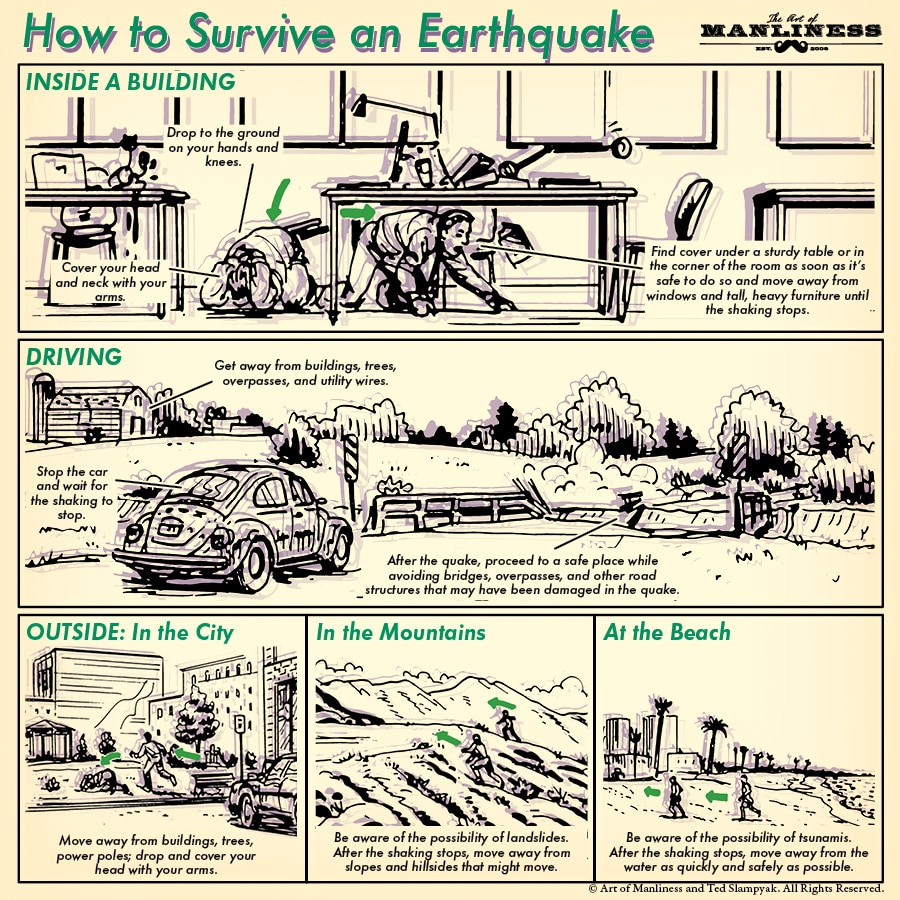
The Gulf Coast and East Coast have hurricanes, the Midwest and South have tornados, and the West Coast faces tsunami threats. No area of the country is without their own special brand of natural disaster to worry about. Earthquakes, however, span state lines, cross mountain ranges, and traverse climates. With the increased practice of deep wastewater disposal in the oil and gas industry, even the typically stable Midwest and central areas of the country are seeing an exponential rise in the number of earthquakes strong enough to get your house shaking (e.g., before 2009 there were an average of two magnitude 3+ earthquakes in Oklahoma; last year there were 907).
Surviving an earthquake starts far before the tremors begin, with careful preparation and planning. You should have enough food and water (a gallon per person per day) to last a minimum of three days, and communicate to friends and family where to meet and how to contact each other after an earthquake, assuming phone lines and electricity are down. Finally, take time to go through your house and secure tall, heavy pieces of furniture and appliances that might topple over. After an earthquake, be prepared to experience powerful aftershocks, and try to get to an open area as soon as it’s safe to do so. During an earthquake, the best survival techniques depend on your surroundings, so heed the tips above.
Inside a building
Find cover under a sturdy table or in the corner of the room as soon as it’s safe to do so and move away from windows and tall, heavy furniture until the shaking stops.
Driving
1: Get away from buildings, trees, overpasses, and utility wires.
2: Stop the car and wait for the shaking to stop.
3: After the quake, proceed to a safe place while avoiding bridges, overpasses, and the other road structures that may have been damaged in the quake.
Outside: in the city
Move away from buildings, trees, power poles; drop and cover your head with your arms.
In the mountains
Be aware of the possibility of landslides. After the shaking stops, move away from slopes and hillsides that might move.
At the beach
Be aware of the possibility of tsunamis. After the shaking stops, move away from the water as quickly and safely as possible.
Like this illustrated guide? Then you’re going to love our book The Illustrated Art of Manliness! Pick up a copy on Amazon.


